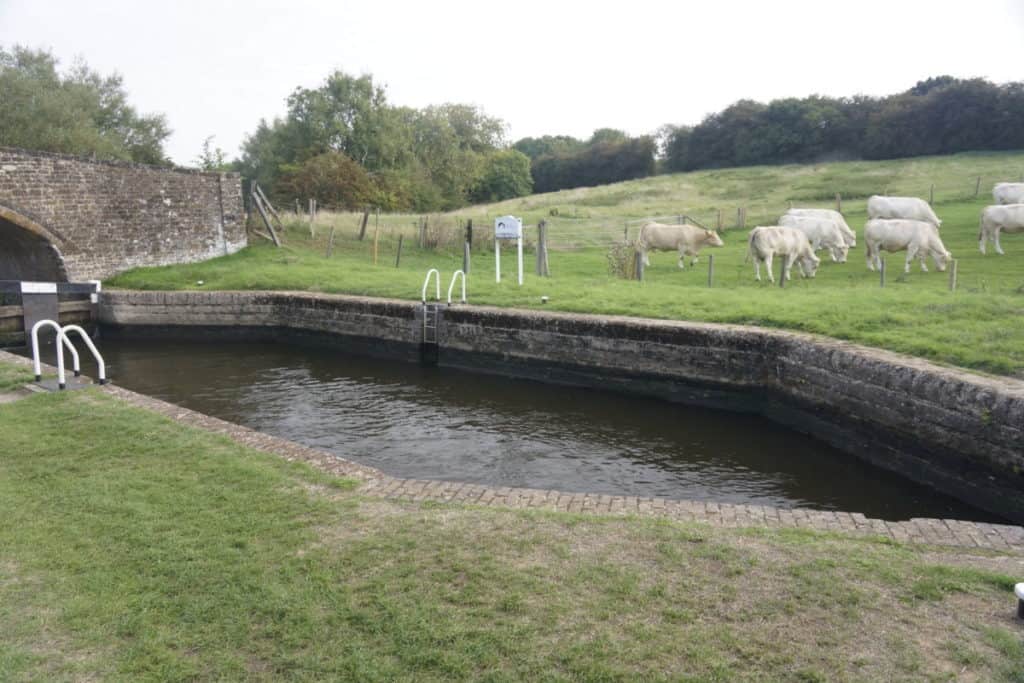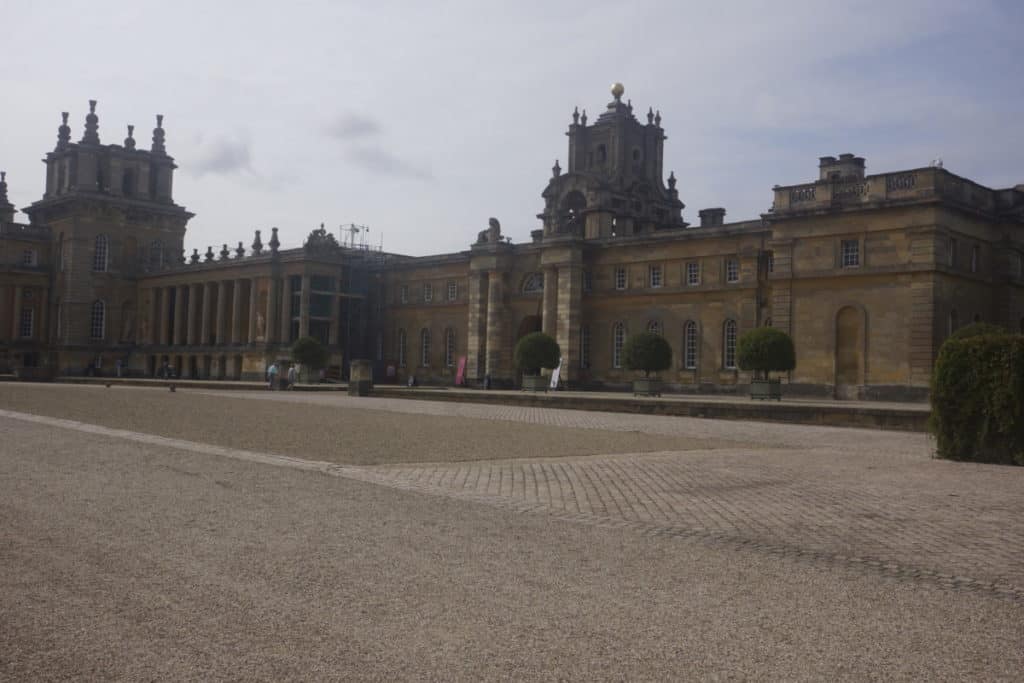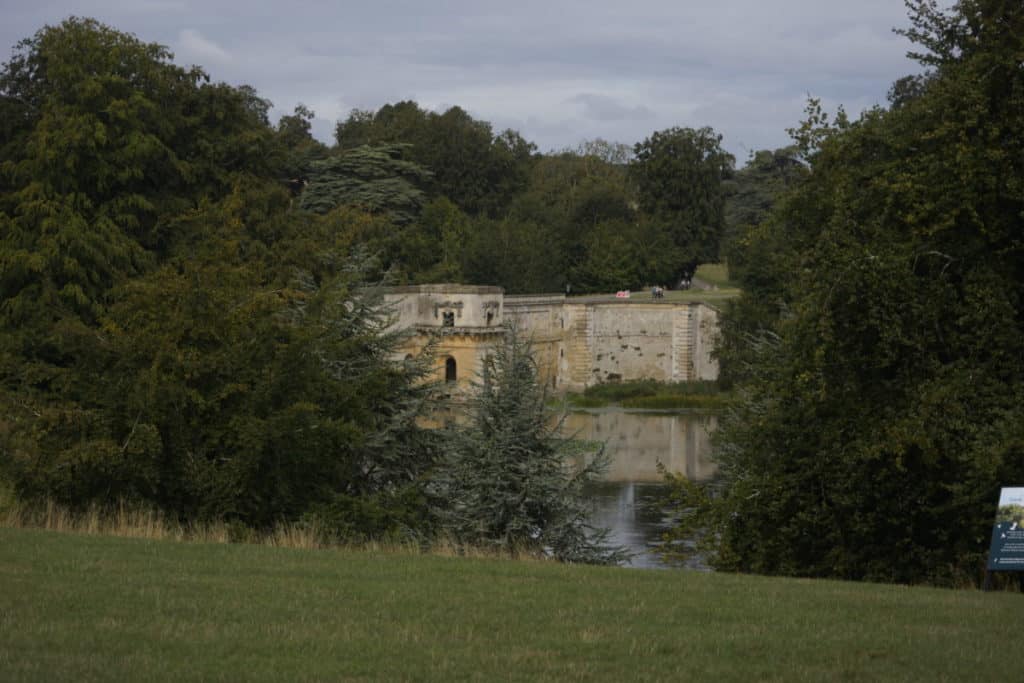Our Narrowboat Adventure On The Thames Ring
Tuesday, August 28. Leaving our moorings at the pub.
Into the country; we’ve left London, Oxford, and the Thames behind in our long, narrow boat. We wake up in a tiny village. In 1086, Thrupp was such a small settlement that The Domesday Book did not record it as having any tenants. It’s still pretty tiny, today. There is an early 17th-century Manor House surrounded by a wall. Next to it is a little row of joined cottages with fanciful names. We admired Fig Cottage with its fig tree encircling the door.
The cottages were built when the Oxford Canal was being extended in the 1780s. There is another old house that was converted into a chapel, and then back again to a house. The Boat Inn nestles beside the cottages, surrounded by farmland. A walkway leads into cut hayfields.
The village and the handsome Boat Inn feature as locations for several of the Morse and Lewis mysteries. (In one TV episode, the canal even contained a headless and footless body. This led to trouser size being a significant piece of forensic evidence. Find the pants-find the killer!)
We admired the fact that these buildings, constructed in very different time periods all blend together. They employ restrained architecture and of course the same pale stone. It’s a practical construction method, the buildings can morph from one use to another with little change. In the States, we knock down buildings 20 years old!
In the Country: A New Kind of Lock
Under the lift bridge and off through the wide Shipton diamond weir lock. We meet other boaters: mostly they know more than we do. We work together to negotiate the locks. This becomes a common theme, it’s a very cooperative venture.

We pass under lift bridge 219, in terrible shape, held together by tape. I hold it up with the boat hook and the boat glides below. Not a hardship, it’s an idyllic location. I leave the boat at Shipton and walk a long way at the spot where the Cherwell River splits from the canal. I am watched intently by a herd of huge red cattle as I hop back onto the moving boat – my first time. The skills don’t come fast but they do come.
We shared Baker’s lock with a family on their boat coming south toward us. Sharing locks with other boats saves labor but it also saves water. This trip is a lesson in how we use water. We pump it into the boat’s tank ourselves. We learn to be careful with it.
We live in a coastal town on the edge of the Florida Everglades. We think about water all the time.
We Find the Rock of Gibraltar
We moor at another pub, the Rock of Gibraltar. It’s a popular pub name ever since the British took ownership of the real rock after the Treaty of Utrecht in 1713. I looked up the War of the Spanish Succession and British Winning of the Rock.
The Rock of Gibraltar is famous mostly for its strategic location, monkeys, and rock stars doing silly things, like playing music to the monkeys. The Spanish want the rock back. The human residents say they don’t want to be Spanish, they like being British, but the monkeys don’t like British rock music. At this point, we don’t know how it will work out.
We had ale and conversation at the pub. It is only four miles to Blenheim Palace. We ask about taxis (and laundromats). It’s a tiny residential area, not much need for taxis or laundromats. Forget Uber!
The barkeeper, Tony, says he can work something out. It’s a local pub, and we meet people stopping for a drink and a chat after work. They often have a relative in Chicago, have been to Disney World with the kids, or are dying to see Miami.
Life on the Narrowoat
Back at the boat, we eat lentil stew with wonderful, well-seasoned, Oxford sausages. We brought a nice little Bose system from home and we have music every night in the Golden Tarn as we review the day and set plans for the next. A good night’s sleep.
We are moored behind the pub’s long garden near some apple trees. The country pubs all have space around them and they are not usually noisy. We were warned, ” don’t moor under a railway bridge or near a canal-side bench.” They say the drunks on the bench will sing and are noisier than the train on the bridge. We take the advice.
In The Country, Blenheim Palace
Wednesday, August 29: Tony meets us at 9:45 and takes us to Blenheim in Woodstock, a small town of pale stone. The palace entrance is in the town. Tony won’t take anything, finally, we agree on a beer that night.

The Remarkable Characters Who Built This Place
This place is 2000 rolling acres of Capability Brown “improvement.” Brown was a great 18th-century landscape designer whose first name was Lancelot. He was a gifted and diligent worker whose sales pitch was “your property has a great capability for improvement.”
There is a large lake and Queen’s pond full of swans and other birdlife. These are bisected by a bridge designed by the architect Sir John Vanbrugh, who had a testy relationship with the lady of the house. The bridge is beautiful, but she thought it was way overpriced. Few of us have had a project like that, but we have all had a project that felt that way.

This estate is the only non-royal, non-Episcopal palace in England. It was the enormous gift of a grateful nation to the general who saved them from the French. Louis XIV started this war because the Hapsburg King of Spain died and Louis, the French powerhouse, wanted to put his grandson on the throne instead of another Hapsburg.
Marlborough Himself
John Marlborough, a boy of limited opportunities from a poorish family always wanted to be a soldier.
He turned out to be brave, a seriously good administrator and foremost, a master of deception. The general marched his army of 20,000 men, 250 miles in 5 weeks, from the low countries to the Danube and nobody – friend or foe – figured it out!
Now, this was 1704. We traveled from the Thames, via Oxford to Blenheim Palace at a pre-industrial era pace. Doing this (at 1-4 mph) teaches you how hard travel was for most of the world’s history. This guy was a big talent.
By winning at Blindheim on the bank of the Danube, Marlborough altered the course of the war, which until then was leaning for Louis XIV’s coalition. Of course, they were grateful.
Building The Palace
Building this palace was an enormous project, requiring a lot of family money. Sarah, the duchess, was not amused. She thought the place was too big, too cold and too expensive. Many years later, Jenny Jerome Churchill, Winston’s American mother agreed. At least about the cold part.
The Marlborough family produced powerful men and also encouraged women of mettle. John Churchill wrote the famous Despatch, which announced his huge win, on the back of his tavern bill and sent it directly to Sarah. She had the pleasure of delivering the good news to Queen Anne.
Sarah was infamous for her thrift. On the tour, they tell you the story that she was so tight-fisted that she saved ink by never crossing her t’s or dotting the I’s. Good thing she didn’t write the Despatch, the queen might have been confused. She fought constantly with her architect over money, eventually firing him. When she built monuments to her husband, however, she relented. She knew where she wanted to spend her money; for the glory of the Duke and the reputation of the family.
Touring the House
For, £27 you buy a pass to the palace and all over the grounds. We took the standard audio tour which was supplemented by a helpful guide in every room.
Our visit coincided with Blenheim Art Foundation’s fifth exhibition. This was a 50 piece exhibit of the modern painter Yves Klein’s wide-ranging work. They incorporated his work throughout the rooms, highlighting –the artist’s vivid “International Klein Blue”.
The vast tapestries depicting The general’s battle victory were impressive and truly told the story. Antique tapestries are always under constant repair and maintenance. In the case of this collection, repair takes one year per tapestry and costs £30,000 each – an industry in itself.
The audio tour ends in an immense library. It has Queen Anne’s very flattering statue at one end and a huge organ at the other. It’s the second-longest room in England. (The Queen’s statue shows her long and willowy. Those who knew her said she was 5 feet tall and about as wide.) This leads you into the Winston Churchill exhibit.
The Winston Churchill Exhibit
We liked some of the comments he made in childhood. The exhibit as a whole was an interesting insight into his character. He relied later, in times of stress, on attributes that showed up early. Signs of determination come to mind. There is a piece on his courtship of Clementine. He flubbed a lot of this, he was lucky to have succeeded.
Some of his artwork was on display. He was quite humble about it. He seemed to have an affinity for the natural world. I grew up in a family which enjoyed animals and sporting art. (On more than one occasion, we had baby lambs in the kitchen on cold nights.)
I was interested to see that he was a good friend of the equestrian painter Alfred Munnings. Munnings was famous for his sympathetic but never sentimental images of horses. He spent the first world war painting war horses. They were an essential part of the war, they died in large numbers, but their contribution was vastly underreported. Alfred Munnings was able to resolve that error.
Churchill and Munnings shared a strong dislike of modern art. Munnings once said that Winston Churchill said to him, “Alfred if you meet Picasso coming down the street would you join me in kicking his….?” Munnings said yes.
We walked to lunch at the “Great Courtyard,” only it wasn’t. We were in the wrong place, a small courtyard. We found the pleasant café and ate hot soup and looked at the Great Courtyard. We won’t make that mistake again.
An Inspector Lewis is filmed partially at Blenheim Palace. It involves a family who impoverishes themselves by renting the house for their daughter’s 21st birthday. If I were one of the other children, I might murder them.
Visiting the Estate-Walking the Grounds
Refreshed, we walked in the grounds. Capability Brown was famous for rolling green hills interspersed with small groves of trees. There are wide-spreading Cedars of Lebanon, English Oaks. There is light and dark, there are greens of all colors from nearly black to gold. Then he fitted deep magenta maples in among the greens. I wonder if his most important genius was that he dared to change landscapes dramatically, by working with such young material. He had great faith in how it would turn out. Another area of genius was the way he handled water.
Of course, he wasn’t the first. He was a student and employee of William Kent. Kent could do everything: painting, sculpture, landscape. He made the monumental statue of John, the first duke, in the chapel. We hope to see his landscape work soon, at Rousham House in Lower Heyford.
Back at the Boat
Back “home” to the boat for a cup of tea. How quickly we began calling the Golden Tarn our home. We are very comfortable with her simple accommodations. We rest well on her and are very adventurous when exploring. We don’t want to miss a thing.
There’s a problem. The engine won’t start. Pete spent time in the trucking business. He bought lots of diesel engines. He did the obvious tests to no result. The boat company sent a man right out. There is no simple fix. We expect another man in the morning.
We are forced to go to the pub. We chatted with another boating couple. From Dorset, they live in a thatched roof house and take off in their narrowboat whenever they can. The guy worked in Pittsburg about the time Pete did. They enjoyed it, they knew all the same places near the iconic spot where the three rivers join. We order the mussels they were eating and another London Hobbit ale.
We bought Tony the bartender a San Miguel beer to thank him for driving us to the palace. A Filipino pale lager, it’s his favorite. He is a nice guy and another experienced narrowboater. We like talking to him. Would he like another? No, he can’t, it’s his night off but an employee is sick and he needs to fill in.
Back at the boat, the bed is smallish and against the wall, but it makes no difference. We sleep well. Tomorrow we head further into the country.
Some Help For A Visit
This will take you to the website of Blenheim Palace There is a lot to see and it pays to prepare for your visit.
This page “Visit Woodstock” is about the village and the Rock of Gibraltar pub.
